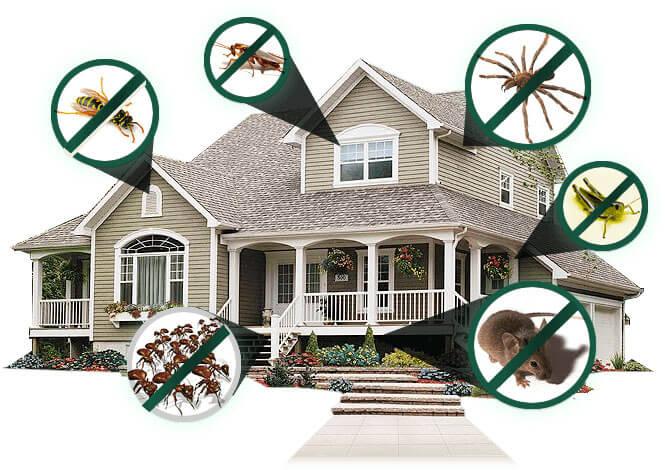Relied On A1 Exterminator Charlotte NC - Comprehensive Pest Solutions
Relied On A1 Exterminator Charlotte NC - Comprehensive Pest Solutions
Blog Article
Bed Pest Therapy Break Down: Contrasting Chemical Vs. Non-Chemical Solutions
In the realm of pest control, especially when taking care of the persistent issue of bed pests, the option in between chemical and non-chemical treatment solutions can be an essential one. Both strategies provide unique benefits and disadvantages, affecting elements such as efficiency, security considerations, and overall expense. By checking out the nuanced details of each approach, a more clear understanding of which path to go after in resolving a bed bug invasion can be achieved.
Performance of Chemical Therapies
Chemical therapies for bed bug problems have been commonly recognized for their fast and powerful efficiency in getting rid of these insects. When taking into consideration the performance of chemical therapies, it is critical to recognize that they can provide a thorough and fast remedy to a bed bug problem.
Additionally, chemical therapies have the advantage of providing recurring effects, meaning that they can remain to eliminate bed pests also after the initial application. This recurring action is particularly useful in combating any kind of possible re-infestations. Additionally, the rapid activity of chemical therapies can bring relief to individuals dealing with serious bed pest invasions, permitting them to regain control of their living spaces quickly.
Safety And Security Interest In Chemical Solutions
One crucial aspect that requires cautious consideration when making use of chemical services for bed insect treatment is guaranteeing the security of owners and the atmosphere. While chemical therapies can be effective in removing bed pests, they may pose risks otherwise taken care of correctly. One of the key security interest in chemical remedies is the potential injury they can trigger to human health. Exposure to specific chemicals utilized in bed bug therapies can result in respiratory system concerns, skin inflammation, or other negative reactions, specifically in people with pre-existing conditions or level of sensitivities. Additionally, inappropriate application or dosage of chemical pesticides can cause harmful residues remaining in the treated location, posing long-lasting health and wellness risks to residents.
Additionally, the environmental effect of chemical options is one more substantial factor to consider. Some chemicals made use of in bed pest therapies may be hazardous to useful pests, wild animals, and environments if they seep into the soil or water supply. It is essential to utilize chemical therapies judiciously, following safety and security standards, and considering much less hazardous alternatives to reduce these dangers and ensure the effective and safe monitoring of bed insect invasions.
Benefits of Non-Chemical Methods
Taking into consideration the potential safety worries and ecological impact connected with chemical solutions for bed pest treatment, checking out non-chemical strategies provides an appealing choice with numerous unique advantages. Non-chemical treatments are eco friendly, as they do not add to air or water pollution, making them a sustainable choice for insect control.
Furthermore, non-chemical remedies can be reliable in targeting bed bugs, consisting of hard-to-reach areas where chemical treatments might not pass through. Approaches such as heat therapy, vacuuming, vapor cleaning, and bed mattress coverings provide extensive elimination without using unsafe chemicals. Furthermore, non-chemical methods can be less turbulent, needing very little preparation and enabling quicker reentry into dealt with areas. On the whole, choosing non-chemical bed pest treatment techniques not just prioritizes safety and security and environmental management yet additionally guarantees efficient and thorough pest control.
Limitations of Non-Chemical Treatments

In addition, non-chemical therapies typically require multiple applications to attain successful eradication. This can be lengthy and might not always ensure full removal of all bed pests and their eggs, specifically in concealed or hard-to-reach areas.
Furthermore, the success of non-chemical therapies heavily depends on this hyperlink correct execution and thoroughness, which can be testing for people without professional expertise. Inadequate application of non-chemical methods might lead to insufficient elimination, leading to consistent infestations and the need for added treatments.
Therefore, while non-chemical treatments have their advantages, it is vital to acknowledge these restrictions and consider them when figuring out one of the most reliable method for taking care of bed bug invasions.
Expense Comparison: Chemical Vs. Non-Chemical Options
Provided the limitations related to non-chemical therapies, a vital facet to review in the context of bed insect administration is the expense comparison between chemical and non-chemical options. Chemical therapies generally involve the application of insecticides by professionals, which can range from $250 to $900 per room, depending upon the seriousness of the invasion and the size of the area to be dealt with. In contrast, non-chemical therapies like warmth treatment or steam can be a lot more expensive, with expenses ranging from $1,000 to $6,000 for a whole home. While the initial price of chemical therapies might appear lower, numerous therapies may be called for to completely remove the infestation, potentially increasing the total cost. On the various other hand, non-chemical alternatives may give a more sustainable and eco-friendly option, although they can be cost-prohibitive for some people. Eventually, when taking into consideration the price of bed bug treatment choices, it is very important to evaluate the upfront costs view against the effectiveness and lasting sustainability of the selected technique.
Conclusion

Considering the prospective safety problems and environmental influence linked with chemical remedies for bed bug treatment, checking out non-chemical techniques presents an appealing option with numerous distinct benefits.Given the restrictions associated with non-chemical therapies, a vital aspect to assess in the context of bed insect management is the cost comparison in between chemical and non-chemical choices. In comparison, non-chemical treatments like heat treatment or vapor can be extra expensive, with prices ranging from $1,000 to $6,000 for an entire home. While the preliminary cost of chemical treatments might appear lower, multiple therapies might be called for to fully eliminate the problem, possibly boosting the overall price.In conclusion, when comparing chemical and non-chemical bed pest therapy options, it is vital to think about effectiveness, safety and security, benefits, limitations, and expense.
Report this page